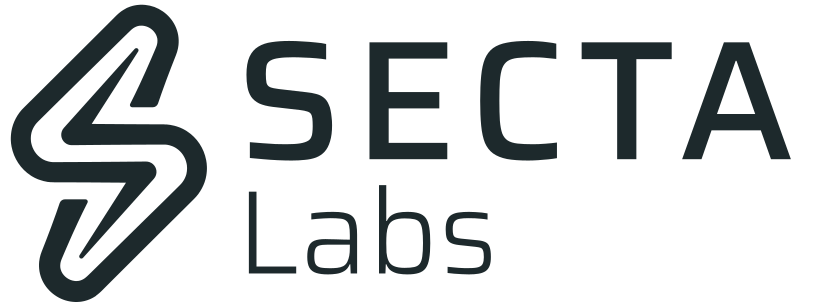Generative artificial intelligence (AI) has already transformed industries, from marketing and software engineering to customer support and education. But as we inch closer to the release of GPT-5, the expectations are shifting dramatically. This isn’t just about better performance—it’s about a whole new paradigm in how we collaborate with machines.
OpenAI CEO Sam Altman has hinted that GPT-5 will introduce significant upgrades: multimodal capabilities, persistent memory, agentic behavior and enhanced reasoning. These aren’t just technical milestones—they’re steps toward a future where AI serves as a proactive teammate rather than a reactive tool.
At SeniorExecutive.com, we asked our AI Think Tank to weigh in. What do these advancements really mean in practice? How will GPT-5 change the way executives, teams and entire industries interact with artificial intelligence? The responses reveal a common theme: a shift from command-based interactions to dynamic, intelligent collaboration.
From Reactive Tools to Intelligent Agents
“GPT-5 feels like the moment we stop just using AI and start working with it,” says Divya Parekh, founder of The DP Group, where she advises leaders on AI strategy and executive communication. “I’m expecting true multimodal integration—text, image, audio—all handled seamlessly. But what really excites me is the evolution in reasoning and tool use.”
Parekh anticipates a model that can adapt, remember and act on its own: “Persistent memory and adaptive behavior could push GPT-5 into agentic territory: delegating tasks, interfacing with [application programming interfaces], maybe even orchestrating workflows autonomously. That changes the game for enterprise, research and personalized experiences.”
“It’s the evolution from question-answering to an autonomous agent that plans and executes.”
Multimodality, Memory and Meaningful Conversations
Jim Liddle, Chief Innovation Officer of Data Intelligence and AI at Nasuni—a cloud-native data platform built for the explosion of unstructured data—believes GPT-5 will unify previously distinct AI functionalities into a single seamless experience.
“Rather than switching between models for voice, image or text, GPT-5 could intelligently adapt to the task across all of them. It’s the evolution from question-answering to an autonomous agent that plans and executes,” he says.
Liddle also highlights an important shift in functionality: better memory and longer context windows that allow AI to stay grounded in extended conversations and documents. Those longer context windows are technology with which other companies, like Google and IBM, have already found success. As Google explains, “Context windows are important because they help AI models recall information during a session.”
Liddle adds, “We’re talking about more analytical depth and the ability to manage workflows independently.”
Driving Real-World Outcomes Through Automation
Roman Vinogradov, VP of Product at Improvado, a platform that centralizes marketing analytics with AI, foresees GPT-5 as a gateway to modular, autonomous systems.
“GPT-5, shaped around a superagent architecture, could intelligently delegate tasks to specialized agents—optimized for specific domains like coding, marketing analytics or medical advice. That means better precision, integration with third-party tools and highly personalized outputs.”
In his view, this move would eliminate friction and increase trust: “You’re no longer guessing what prompt works best. The system knows what you need and gets it done.”
“Multimodal capabilities and personalization open the door for smarter contact centers, better healthcare diagnostics and scalable education.”
Scaling Intelligence Across Industries
For Egbert von Frankenberg, CEO of Knightfox App Design, a firm helping small and medium-sized enterprises (SMEs) integrate AI into operations, GPT-5 could create a unified intelligence layer that transforms entire sectors.
“GPT-5’s improved context retention, multimodal capabilities and personalization open the door for smarter contact centers, better healthcare diagnostics and scalable education solutions. Advanced voice mode and deep research functions could redefine accessibility and productivity.”He points to Altman’s suggestion that GPT-5 may surpass human-level performance in niche domains as a sign that AI is shifting from a helpful tool to an independent contributor.
Bridging Data, Speed and Ethics
Suri Nuthalapati, who leads Data and AI Practice for the Americas at Cloudera, a hybrid data platform managing vast enterprise datasets, expects significant leaps in performance and reliability.
“GPT-5 could enable real-time, persistent interactions that are contextually aware—like talking to an assistant who actually remembers you,” says Nuthalapati. He also expects lower latency, stronger reasoning and better safeguards for bias and misinformation.
“As it evolves toward smarter decision-making, GPT-5 becomes not just scalable, but trustworthy—key for enterprise-grade adoption.”
Enhancing Enterprise and Developer Experiences
Nikhil Jathar, CTO of AvanSaber, an enterprise software firm pioneering AI and XR-driven business tools, emphasizes GPT-5’s potential to handle increasingly complex tasks.
“More accurate content generation, better reasoning and perhaps native multimodal inputs will reduce the need for human intervention in repetitive workflows,” he says. “It’s going to enable higher-value work and tighter alignment between AI output and business needs.”
“It’s a shift from reactive AI to cognitive assistants—software that collaborates.”
The Human Factor: Personalized Collaboration
Sarah Choudhary, CEO of ICE Innovations, a tech company advancing intelligent mobility and smart automation platforms like ICE Ride and iChef, sees GPT-5 as the first model that behaves like a true partner.
“Instead of responding, it might proactively refine answers, ask follow-ups or integrate directly with systems to act,” she says. “It’s a shift from reactive AI to cognitive assistants—software that collaborates, not just computes.”
Looking Ahead: An AI Future Fueled by Partnership
As GPT-5 nears release, what becomes clear from these expert insights is that we are entering a new phase of human-AI interaction. This isn’t just about speed or convenience—it’s about trust, autonomy and the delegation of real responsibility to AI systems that can think, learn and act on our behalf.
From superagents to multimodal intelligence and dynamic task execution, GPT-5 promises to be more than just an upgrade—it may very well be a shift in how work gets done.
If GPT-4 laid the groundwork for generative AI’s mainstream adoption, GPT-5 could be the inflection point that makes AI indispensable—not as a tool, but as a collaborator.














